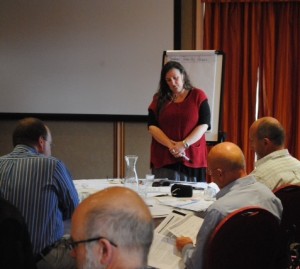Rules for effective management of change
Change management entails: planning, implementation, consultation with, and involvement of, the people affected by the changes. Change must be realistic, achievable and measurable.
Before starting organisational change, ask yourself:
What do we want to achieve with this change, why, and how will we know that the change has been achieved?
Who is affected by this change, and how will they react to it?
How much of this change can we achieve ourselves, and what parts of the change do we need help with?
Involve staff at all levels; check their understanding of the need for change and use face-to-face communications.
For complex changes, utilise the process of project management (http://www.businessballs.com/project.htm), and ensure that you augment this with consultative communications to agree and gain support for the reasons for the change.
One of the leading experts on change management is John P Kotter, who has developed ‘eight steps to successful change’. Kotter’s ‘Leading Change’ (1995) and ‘The Heart Of Change’ (2002) describe a helpful model for understanding and managing change.
Kotter’s eight-step change model can be summarised as:
• Increase urgency – inspire people to move, make objectives real and relevant.
• Build the guiding team – get the right people in place with the right emotional commitment, and the right mix of skills and levels.
• Get the vision right – get the team to establish a simple vision and strategy, focus on emotional and creative aspects necessary to drive service and efficiency.
• Communicate for buy-in – Involve as many people as possible, communicate the essentials, simply, and to appeal and respond to people’s needs. De-clutter communications – make technology work for you rather than against.
• Empower action – Remove obstacles, enable constructive feedback and lots of support from leaders – reward and recognise progress and achievements.
• Create short-term wins – Set aims that are easy to achieve – in bite-size chunks. Manageable numbers of initiatives. Finish current stages before starting new ones.
• Don’t let up – Foster and encourage determination and persistence – ongoing change – encourage ongoing progress reporting – highlight achieved and future milestones.
• Make change stick – Reinforce the value of successful change via recruitment, promotion, new change leaders. Weave change into culture.
Key Points
Create a sense of urgency, recruit powerful change leaders, build a vision and effectively communicate it, remove obstacles, create quick wins, and build on your momentum. If you do these things, you can help make the change part of your organisational culture.

